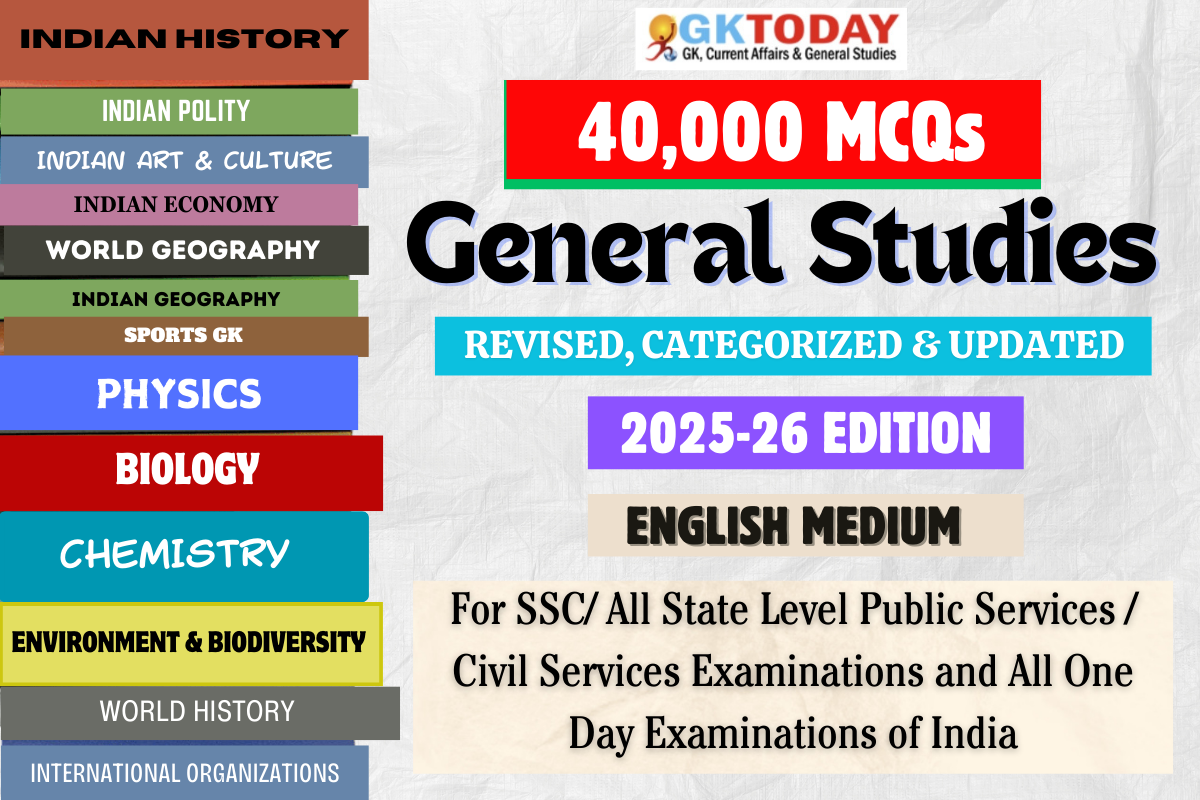Indian Polity & Constitution MCQs
Indian Polity & Constitution Objective / Multiple Choice (MCQs) Questions for Preparation of SSC-CGL, UPSC Civil Services, NDA, CDS, Railways and State Level Public Services Examinations.
1. Who among the following headed the Advisory Committee on Fundamental Rights, Minorities and Tribal and Excluded Areas a committee under the Constituent Assembly?
[A] Jawahar Lal Nehru
[B] Vallabhbhai Patel
[C] H C Mukherjee
[D] Maulana Azad
Show Answer
Correct Answer: B [Vallabhbhai Patel]
Notes:
The Advisory Committee on Fundamental Rights, Minorities and Tribal and Excluded Areas was headed by Sardar Vallabhbhai Patel. Patel presented the committee’s recommendations on political safeguards for minorities sans separate electorates which were adopted by the Constituent Assembly.
2. Balwantrai Mehta, a pioneer of Panchayati Raj and a distinguished freedom fighter, was Chief minister of which state?
[A] Maharastra
[B] Gujarat
[C] Andhra Pradesh
[D] Madya Pradesh
Show Answer
Correct Answer: B [Gujarat]
Notes:
BBalwantrai Mehta was one of the legendry freedom fighters of the country who participated in the Bardoli Satyagraha. He is best known as second Chief Minister of Gujarat.He is credited for pioneering the concept the Panchayati Raj in India and also known as Father of Panchayati Raj in India.
3. Which among the following is the most appropriate definition of Political liberty of Citizens of India ?
[A] Right to participate in the government and assume equal opportunity to assume highest office
[B] right to cast vote and participate in the election process
[C] Equal opportunity to freely move in the Political territories of India
[D] None of the above
Show Answer
Correct Answer: A [Right to participate in the government and assume equal opportunity to assume highest office]
Notes:
The rights to life and personal liberty apply for persons of any nationality, while others, such as the freedom of speech and expression are applicable only to the citizens of India (including non-resident Indian citizens).
4. During the tenure of which of the following prime ministers Lok Sabha could never meet?
[A] Morar Ji Desai
[B] Chaudhary Charan Singh
[C] Inder Kumar Gujral
[D] H. D. Deve Gowda
Show Answer
Correct Answer: B [Chaudhary Charan Singh]
Notes:
Chaudhary Charan Singh served as the 5th Prime Minister of India between 28 July 1979 and 14 January 1980. During his whole tenure as a prime minister, no Lok Sabha session took place.
5. The following years a national emergency has been proclaimed so far ?
[A] 1961,1972,1975
[B] 1962,1975,1977
[C] 1962,1972,1975
[D] 1962,1971,1975
Show Answer
Correct Answer: D [1962,1971,1975]
Notes:
In the history of independent India, a state of emergency has been declared thrice. In 1962 due to India-china war, in 1971 due to Indo-Pakistan war and in 1975 due to internal disturbances under Indira Gandhi government.
6. Under which of the following articles rule of law embodied under Article 14 of Indian constitution can be amended?
[A] Article 354
[B] Article 358
[C] Article 360
[D] Article 368
Show Answer
Correct Answer: D [Article 368]
Notes:
The procedure of amendment to the constitution is laid down in the Article 368 of the Constitution of India. Under this article, rule of law embodied under Article 14 of Indian constitution can be amended.
7. A bill which affects the meaning and scope of which among the following can be introduced in the parliament only on recommendation of President of India?
[A] Foreign Loans
[B] Corporation Tax
[C] Tax on Agriculture Income
[D] Export Duties
Show Answer
Correct Answer: C [Tax on Agriculture Income]
Notes:
A bill which affects the meaning and scope of Tax on Agriculture Income, can only be introduced in the parliament on recommendation of the President of India.
8. In context with the Financial Powers of the President, which among the following is NOT a correct statement?
[A] No money bill can be introduced without his prior approval
[B] Withdrawal from the contingency fund of India is done after the permission of the President
[C] Finance Commission is appointed by him
[D] Money in public account of India remains at his disposal
Show Answer
Correct Answer: D [Money in public account of India remains at his disposal]
Notes:
Money in public account of India is the liability of the government so, no necessary requirement in approval for the same.
9. Which act discontinued the appointment to civil services and reservation of posts by the Secretary of State?
[A] Independence of India Act, 1947
[B] Government of India Act, 1935
[C] Government of India Act, 1919
[D] None of the Above
Show Answer
Correct Answer: A [ Independence of India Act, 1947 ]
Notes:
The Indian Independence Act, 1947 had the provision for discontinuation of civil services and reservation of posts by Secretary of State. However, the members of the civil services appointed before August 15, 1947 were to enjoy all the benefits that they were entitled till that time.
10. Who headed the committee on Chief Commissioners’ Provinces in the Constituent Assembly?
[A] B. Pattabhi Sitaramayya
[B] Jawaharlal Nehru
[C] K M Munshi
[D] Alladi Krishnaswamy Ayyar
Show Answer
Correct Answer: A [B. Pattabhi Sitaramayya]
Notes:
The Committee on Chief Commissioners’ Provinces was headed by B. Pattabhi Sitaramayya. He was an activist and a political leader in the state of Andhra Pradesh. He is the author of the book “History of the Indian National Congress”.

